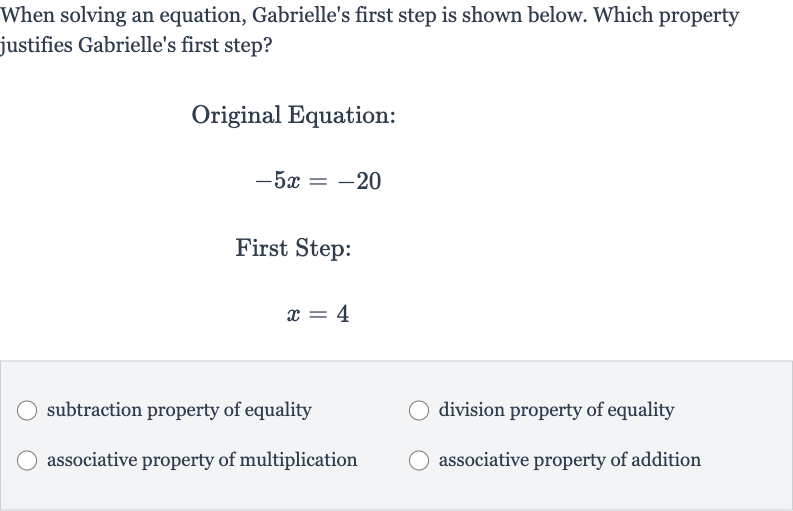AI tutor
Welcome to Bytelearn!
Let’s check out your problem:

When solving an equation, Gabrielle's first step is shown below. Which property justifies Gabrielle's first step?Original Equation:First Step:subtraction property of equalitydivision property of equalityassociative property of multiplicationassociative property of addition
Full solution
Q. When solving an equation, Gabrielle's first step is shown below. Which property justifies Gabrielle's first step?Original Equation:First Step:subtraction property of equalitydivision property of equalityassociative property of multiplicationassociative property of addition
- Identify Equation: Gabrielle's first step in solving the equation is going from to . To determine which property justifies this step, we need to look at the operations performed. Gabrielle divided both sides of the equation by to isolate . This is an application of the division property of equality, which states that if you divide both sides of an equation by the same nonzero number, the two sides remain equal.Calculation: leads to .
More problems from Identify properties of logarithms
QuestionGet tutor help
QuestionGet tutor help
QuestionGet tutor help
QuestionGet tutor help
QuestionGet tutor help
